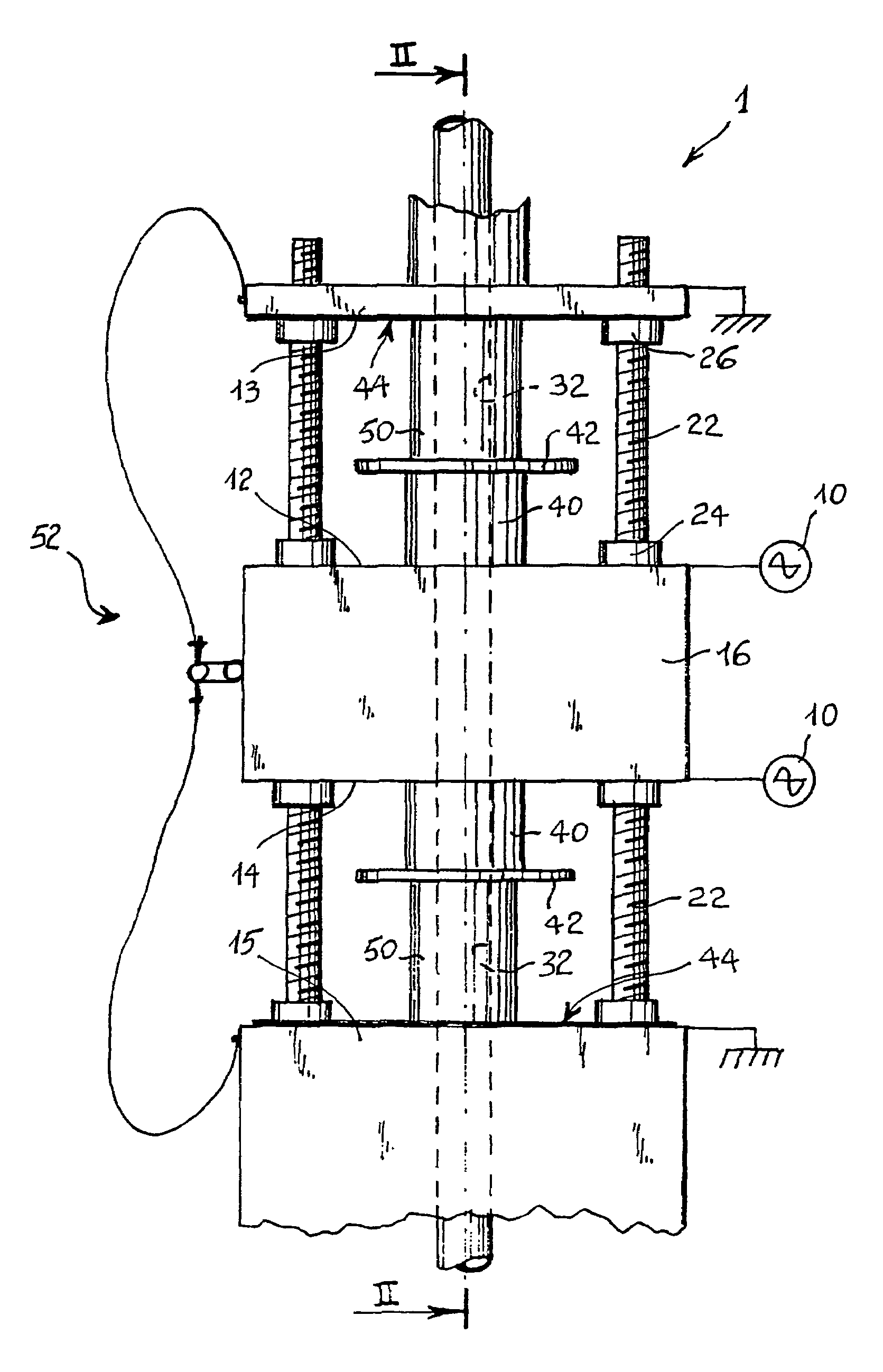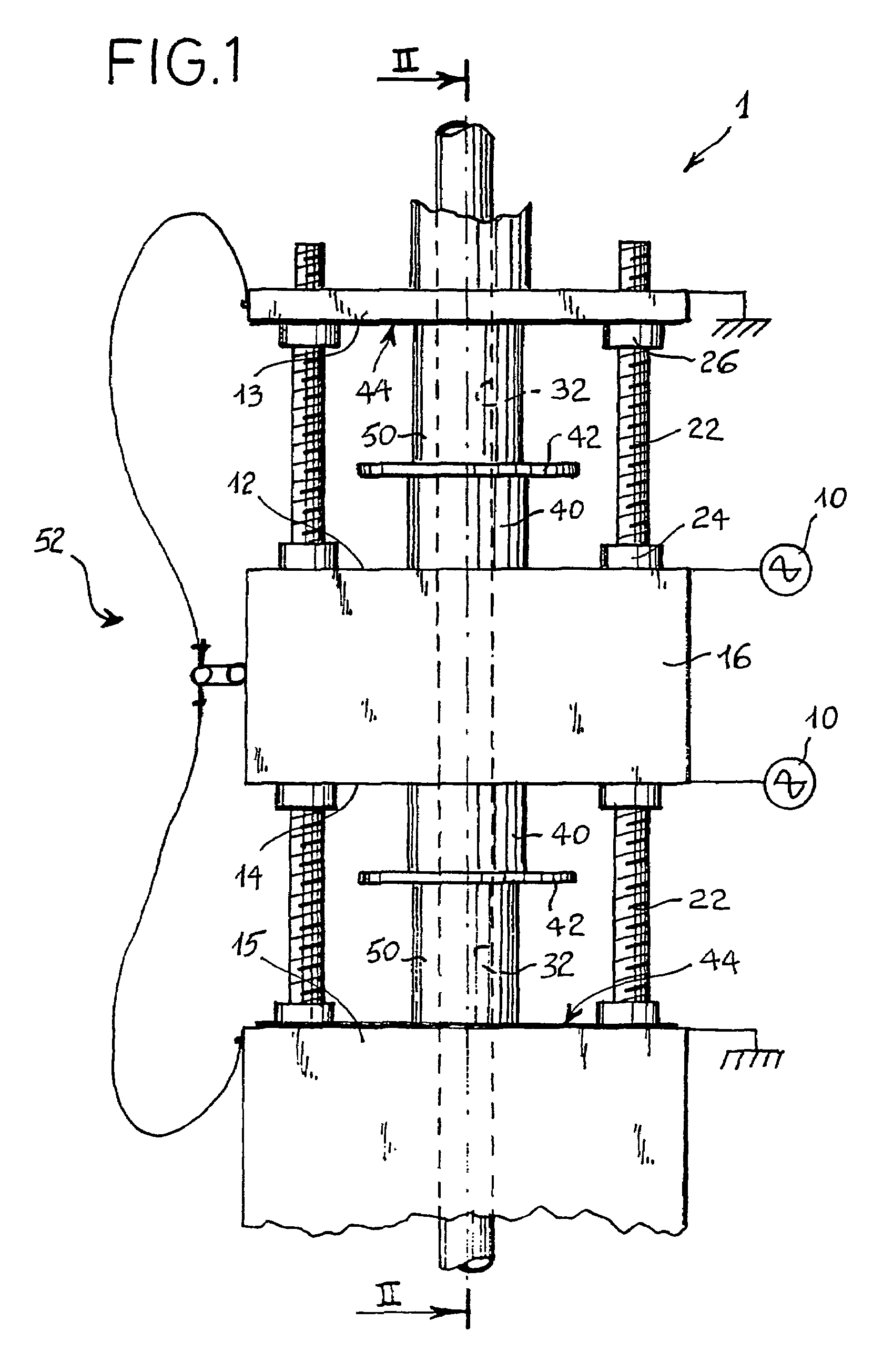Industrial apparatus for applying radio-frequency electromagnetic fields to semiconductive dielectric materials
a semi-conductive dielectric material and radio-frequency electromagnetic technology, applied in the directions of food preservation, food treatment, food science, etc., can solve the problems of difficult to bring the products, undesired effects detrimental to the products, and the dielectric loss of the product heats up, so as to achieve the effect of easy use and maintenan
- Summary
- Abstract
- Description
- Claims
- Application Information
AI Technical Summary
Benefits of technology
Problems solved by technology
Method used
Image
Examples
Embodiment Construction
[0026]With reference now to the drawings, an industrial apparatus for applying radio-frequency electromagnetic fields to semiconductive dielectric materials comprises a conventional electrical generator 10 which produces at its terminals an oscillating voltage of predetermined amplitude and with a predetermined frequency within the typical radio-frequency range, for example, but in non-limiting manner, from a few kHz to a few hundred MHz.
[0027]The voltage produced by the radio-frequency generator 10 supplies an applicator device 1, the configuration of which enables a radio-frequency electromagnetic field of considerable intensity to be generated inside it. The material to be subjected to heat treatment, for example, but in non-limiting manner, semiconductive food products, preferably milk during pasteurization or sterilization treatments, is passed through the applicator device 1 in a manner such that the electromagnetic field heats it to a predetermined temperature and for a prede...
PUM
 Login to View More
Login to View More Abstract
Description
Claims
Application Information
 Login to View More
Login to View More - R&D
- Intellectual Property
- Life Sciences
- Materials
- Tech Scout
- Unparalleled Data Quality
- Higher Quality Content
- 60% Fewer Hallucinations
Browse by: Latest US Patents, China's latest patents, Technical Efficacy Thesaurus, Application Domain, Technology Topic, Popular Technical Reports.
© 2025 PatSnap. All rights reserved.Legal|Privacy policy|Modern Slavery Act Transparency Statement|Sitemap|About US| Contact US: help@patsnap.com



